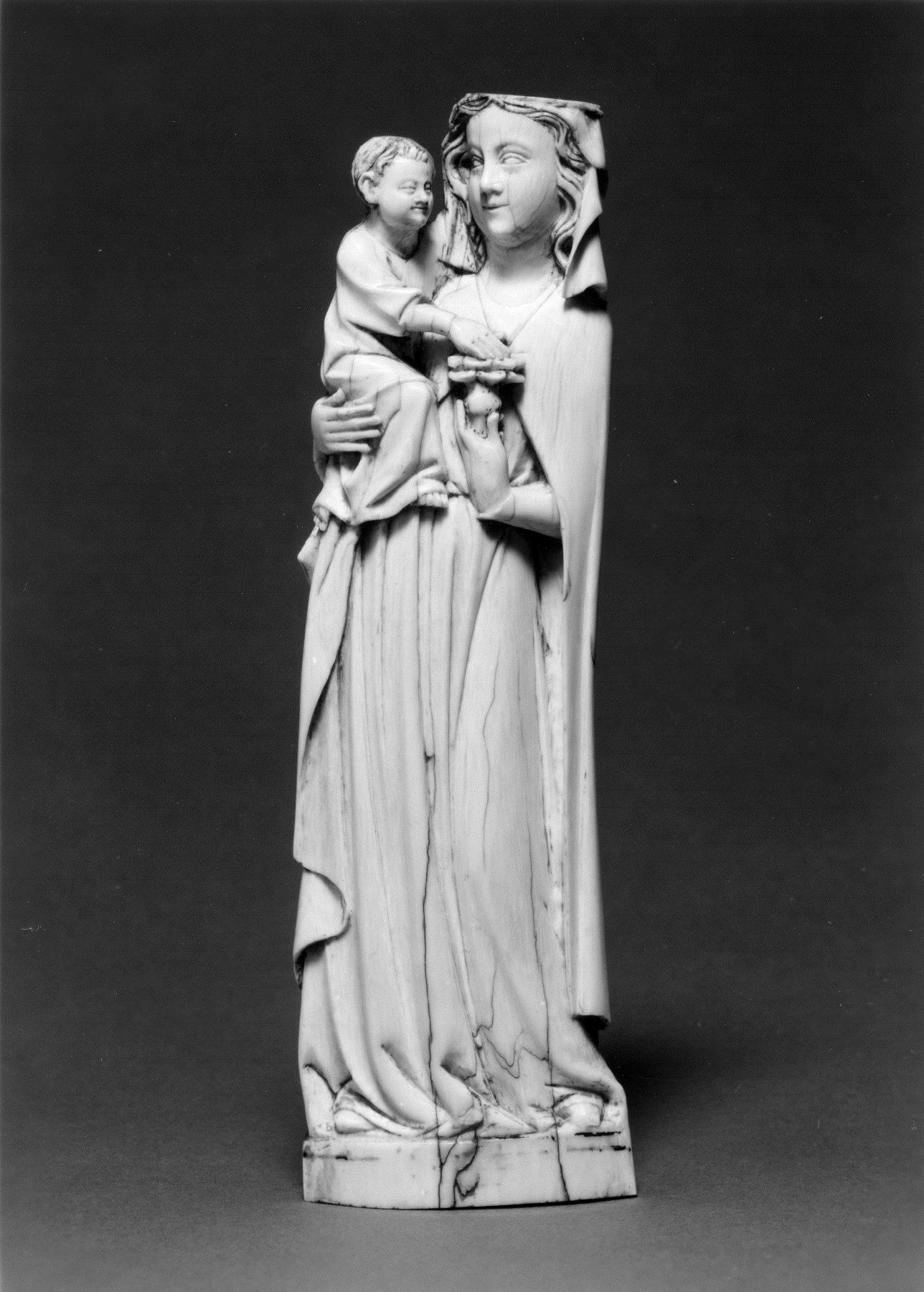Virgin and Child
(Medieval Europe )
The Virgin is carved from a thin curved piece of ivory, backed with a fill of hardwood (chestnut (?)) to stabilize the figure. The tall Virgin wears a mantle that falls straight from her shoulders, and offers a flower to the Child, whom she holds with her right hand.
The crown, which was of carved ivory, is missing, and the head is crosshatched to receive it. There are traces of gilding in the hair and a gilt line across the raised base. The Child's head has been broken and repaired with the original piece.
Provenance
Provenance (from the French provenir, 'to come from/forth') is the chronology of the ownership, custody, or location of a historical object. Learn more about provenance at the Walters.
Marcus Antocolsky, Paris [date of acquisition unknown], by purchase; Sale, Hotel Drouot, Paris, June 10, 1901, no. 72; Henry Walters, Baltimore, 1901, by purchase; Walters Art Museum, 1931, by bequest.
Exhibitions
| 1995-1996 | Medieval Art in America 1800-1940, Patterns of Collecting. Palmer Museum of Art, University Park. |
Geographies
Germany, Middle Rhine (Place of Origin)
Measurements
H: 7 11/16 in. (19.5 cm)
Credit Line
Acquired by Henry Walters, 1901
Location in Museum
Not on view
Accession Number
In libraries, galleries, museums, and archives, an accession number is a unique identifier assigned to each object in the collection.
In libraries, galleries, museums, and archives, an accession number is a unique identifier assigned to each object in the collection.
71.153




